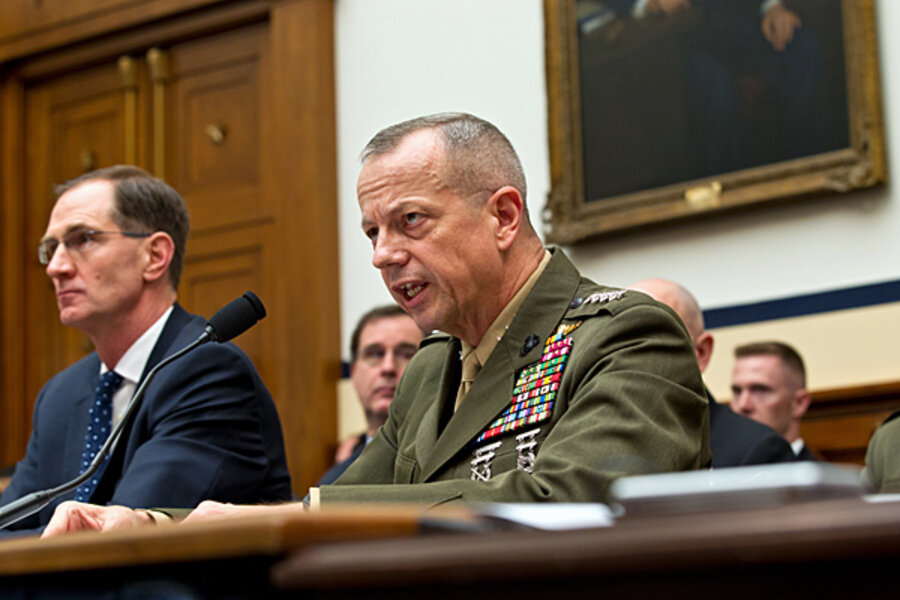NATO fatalities in Afghanistan: 22 percent this year at hands of Afghan Army, police
Loading...
Gen. John Allen, commander of NATO forces in Afghanistan, gave a typically upbeat assessment of the war's progress to Congress yesterday. He urged lawmakers to "stay the course," claimed that "the campaign is on track," and that the multibillion dollar effort to train and expand the Afghan military is going well.
Perhaps. But his remarks, which come after US troops burned Qurans at an airbase outside Kabul and the apparent murder of 16 Afghan civilians in their homes in the south of the country by a US sergeant, also acknowledged the increasing toll on NATO troops in the country from their erstwhile Afghan partners.
Allen said 60 NATO troops from six countries, most from the US, have been killed in Afghanistan this year. Of those, 13 have been killed by Afghan security forces, he said. That's 22 percent of the total. Allen said some of the Afghan soldiers and police who killed foreign troops "were motivated, we believe in part, by the mishandling of religious materials.”
Allen said the war in general is going very well. “I can tell you, unequivocally, three things. First, we remain on track to ensure that Afghanistan will no longer be a safe haven for [Al Qaeda] and will no longer be terrorized by the Taliban,” he said. “Second, as a coalition … we are well along in our progress to meet our 2010 [NATO] commitments to transition security lead to the Afghan national security forces by December 2014. Third, our troops know the difference they are making, and the enemy feels it every day.”
But there was little in the way of hard metrics to measure that progress. “I wish I could tell you that this war was simple, and that progress could be easily measured,” Allen said. “But that’s not the way of counterinsurgencies. They are fraught with success and setbacks, which can exist in the same space and time, but each must be seen in the larger context of the overall campaign. And I believe that the campaign is on track."







